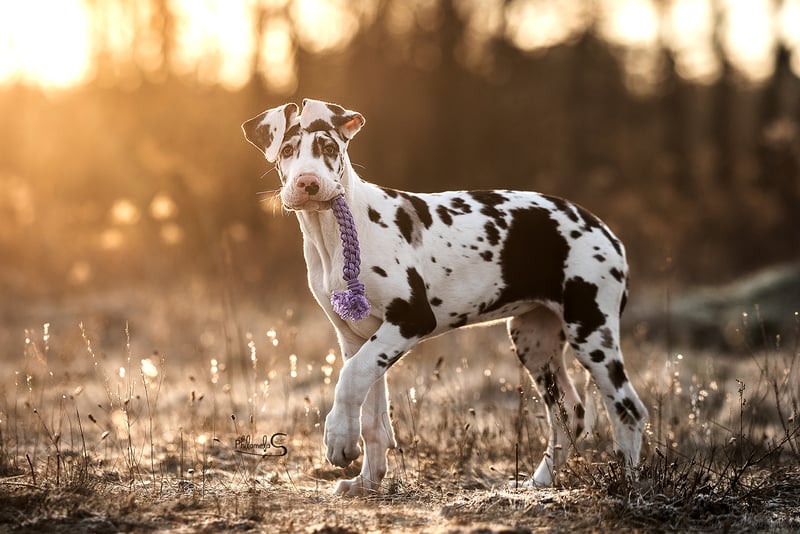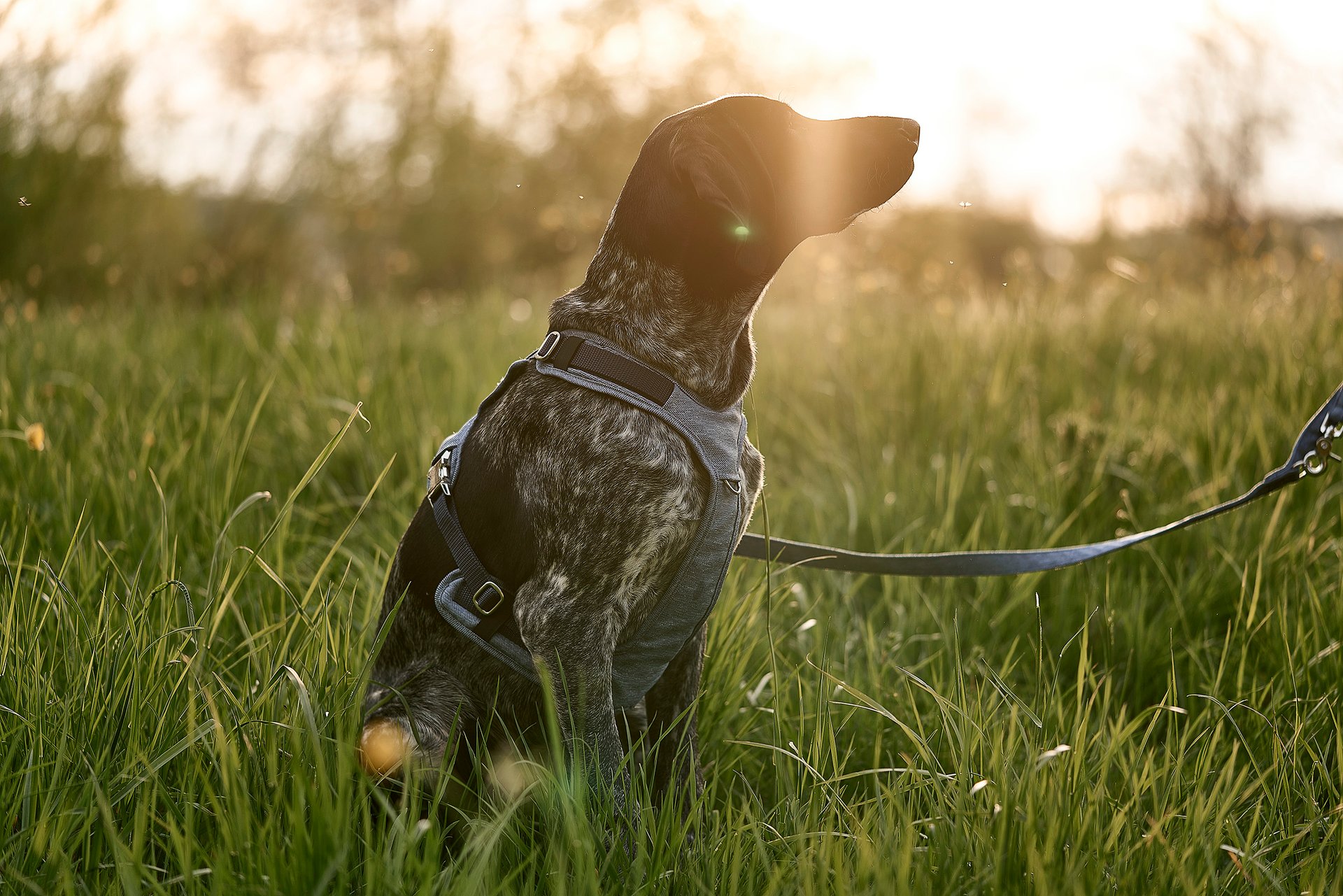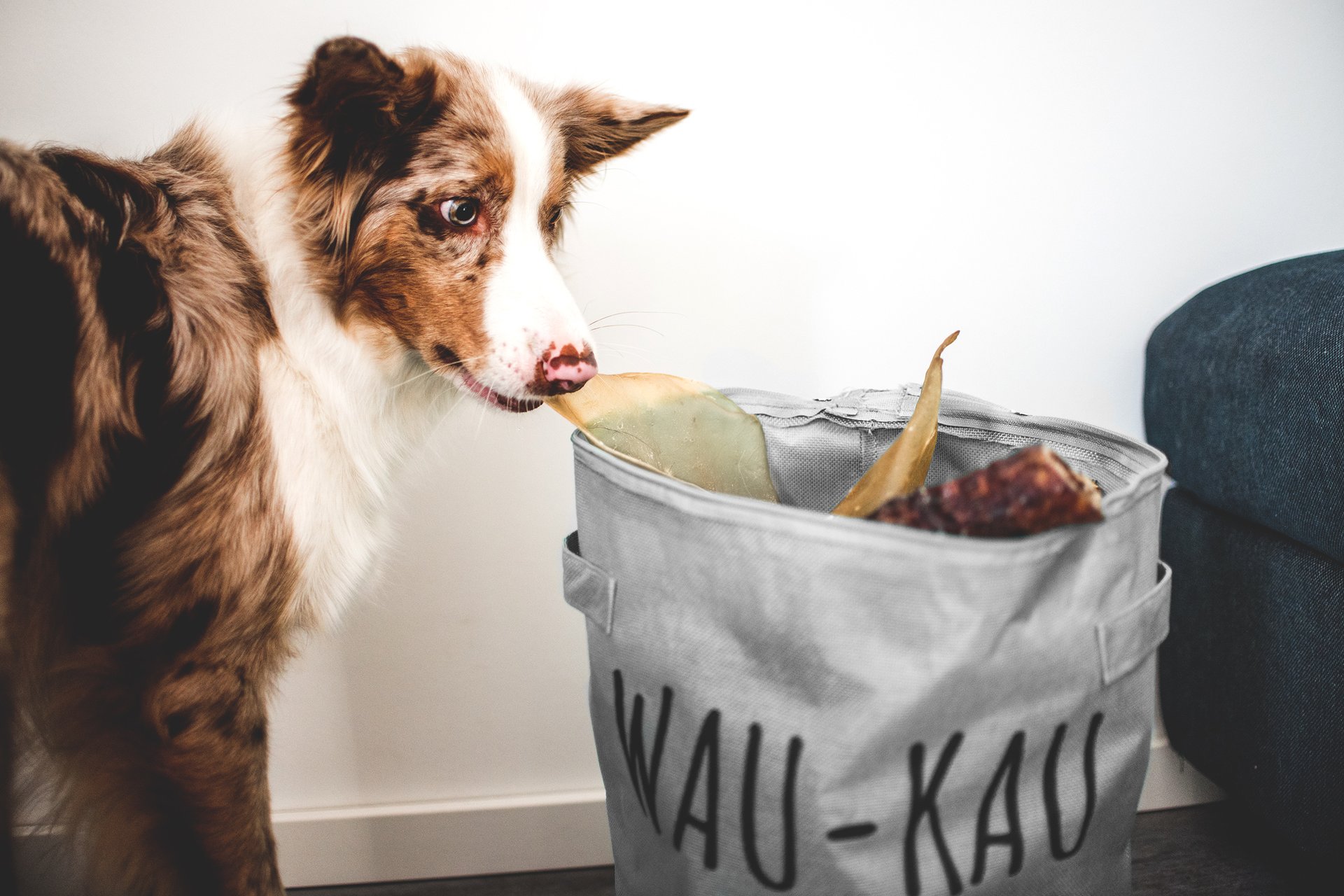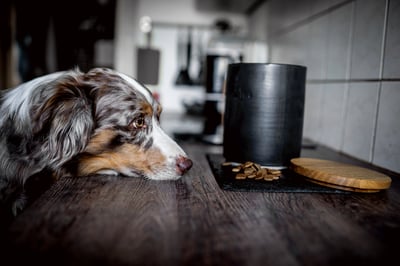Perhaps you know the problem: you have leftovers and would love to give them to your four-legged friend, who stares at you with big Bambi eyes. But what foods are dogs allowed to eat? Just because it's good for humans doesn't mean that our dogs can derive the same added value from it. Many substances cannot be broken down properly in the dog's metabolism, or only at a slower rate, and a well-intentioned snack ends up causing digestive problems or even poisoning the four-legged friend.
These substances are poisonous!
Perhaps you know the problem: you have leftovers and would love to give them to your four-legged friend, who stares at you with big Bambi eyes. But which foods are dogs allowed to eat? Just because it's good for humans doesn't mean that our dogs can derive the same added value from it. Many substances cannot be broken down properly in the dog's metabolism, or only at a slower rate, and a well-intentioned snack ends up causing digestive problems or even poisoning the four-legged friend.
But it's not just food that can harm our dogs. Plants, medication or substances from the cleaning cupboard can also have a negative effect on a dog's well-being.
In this article, we answer all relevant questions on the topic: What is poisonous for dogs? We also show you how you can prevent poisoning, what the signs of poisoning can be and how you should act in the event of poisoning.
How can I prevent my dog from eating something poisonous?
The German Veterinary Association compares the handling of dogs in the household to that of a small child: Medication, cleaning agents or other potentially toxic substances should definitely be kept out of reach of the dog. But what about outside the household, or with a dog that won't even stop at doors and cupboards?
Impulse control and obedience
Train impulse control with your dog as early as possible. The dog should be able to control emotions and impulses and not enthusiastically pounce on food lying around. Of course, this applies both indoors and outdoors. The dog should learn that nothing should be eaten that does not come from the owner's hand, even if it is a tempting sausage roll at the bus stop.
Nevertheless, even a dog with high impulse control should always be watched. Poisoned baits in particular pose a problem for many dogs, as they are often prepared in such a way as to attract even the most obedient dog.

Leash guidance
It is advisable to keep your dog on a lead, especially in areas where warnings have been issued for toxic substances such as poisoned bait or rat poison.

Muzzle
Dogs that have problems with impulse control benefit from a muzzle outside. Often you can't look so quickly before your four-legged friend has pulled something out of the bushes. A muzzle can be a good aid here to prevent poisoning from unknown substances. Would you like to find out more about muzzling your dog? You can find our blog post here!

Storage
Keep out of reach: All substances that could have a negative effect on your dog's health should always be kept out of reach. As many dogs will not mind being placed on a table or chest of drawers, especially if they are alone in the room, all incompatible substances should be stored behind a (cupboard) door or at a height that the dog cannot reach.

Important: Please do not hesitate to contact your vet if you have any questions. If your dog has nevertheless eaten something and you feel unsure, it is better to consult your vet once too often than too little.
What are the signs of poisoning in dogs?
Not every poisoning causes external symptoms in dogs. Signs of poisoning can also appear immediately after ingestion or a long time later. The classic symptoms of poisoning can be found below, and which symptoms can be caused by which substance can be found after the next subtopic.
- Vomiting
- diarrhea
- apathy
- restlessness
- Abdominal pain
- fever
- Shortness of breath
What to do in case of poisoning?
The German Veterinary Association recommends contacting a vet as soon as possible. Lay people would rarely be able to provide targeted help in the event of poisoning, which is why contacting a vet as soon as possible can be essential.
It is important that you remain calm and do not cause your dog any additional stress. Show him that you are there for him and support him.
Under no circumstances should you try to make your dog throw up. Foods that are popularly known to promote vomiting can, in the worst case, accelerate the effect of the toxins. If we humans want to induce vomiting ourselves, we often resort to the tried and tested method of sticking our finger down our throat. This is not an option for dogs: dogs cannot be made to vomit in this way and even if they do, the toxic contents of their stomachs can cause more damage.
If your dog is no longer conscious, lay him on his side. Make sure that his head is positioned so that he cannot choke on his saliva or vomit.
Which foods are poisonous?
Many dog owners would love to shower their four-legged friends with love - and food. They often look in their own cupboards, because what's good for humans must also be good for dogs, right?
The answer to this question is clearly no. Many substances in our food are highly toxic for our pets because they are unable to break them down. Even small amounts of an incompatible food can lead to abdominal pain or diarrhea in dogs.

In this section you will find a variety of foods that you should not feed your dog.
Chocolate
Chocolate contains theobromine, which is toxic to dogs. Dogs can only break this down very slowly in their bodies, if at all. For this reason, dogs should never eat chocolate; dark chocolate in particular can be very harmful to dogs. Dark chocolate generally contains the highest dose of theobromine, while white chocolate contains hardly any of the active ingredient.
If your four-legged friend has ingested a large amount of the active ingredient, do not hesitate to take him to the vet immediately. This is because a high dose can also lead to the dog's death.
Symptoms: Diarrhea, vomiting, abdominal pain, seizures, tremors, cardiac arrhythmia, respiratory distress
Dairy products
Lactose intolerance is an issue that also concerns many two-legged friends. Did you know that dogs also suffer from lactose intolerance? As with us humans, not every dog develops lactose intolerance in the course of its life. However, it is not atypical in adult dogs. They no longer have the necessary enzymes to digest dairy products properly.
Even dogs that are not lactose intolerant often have problems digesting dairy products. So at best, only feed dairy products in moderation and observe how your dog reacts to them.
Symptoms: Diarrhea, abdominal pain, flatulence
Raw food
A number of foods are no problem for your dog's stomach when cooked. However, there are also raw foods that your four-legged friend should not eat under any circumstances. These include, for example, raw potatoes, lentils, beans, tomatoes and eggplants. Raw pulses, for example, contain toxic substances such as phasin. Only feed your dog these foods if you have boiled them beforehand, as this can render the harmful substances harmless.
Symptoms: vomiting, diarrhea, abdominal pain, neurological impairment, raw legumes can lead to internal bleeding in the worst cases
Grapes and raisins
Grapes and raisins can contain the toxic substance oxalic acid, which can lead to intolerance and even kidney failure in dogs.
Symptoms: vomiting, diarrhea
Stone fruit
With stone fruit, such as cherries, apricots or peaches, the stone is particularly dangerous for your four-legged friend. Not only can the stone itself cause a blockage in the intestines, but chewing on the stone can release toxins such as prussic acid or prunasin.
Symptoms: vomiting, diarrhea, cramps, shortness of breath
Caffeine
As with theobromine, which is found in chocolate, the dog's metabolism is not designed to process caffeine. Caffeine contains the active ingredient methylxanthine, which has a negative effect on your dog's nervous system. Even a small sip can lead to restlessness and a racing heart.
Symptoms: Heart palpitations, vomiting, restlessness, hyperactivity, seizures, tremors, cardiac arrhythmia, shortness of breath, cardiovascular arrest
Alcohol
The consumption of alcohol can lead to liver and kidney damage in our four-legged friends.
Symptoms: vomiting, digestive problems, shortness of breath, coordination disorders
Onions and garlic
Onions and garlic contain active substances that attack your dog's red blood cells, which in turn are necessary for the supply of oxygen to vital organs. In this case, it doesn't matter whether onions and garlic are raw, cooked or fried. These foods should never make it into the dog's body.
Symptoms: change in urine (e.g. blood in the urine), vomiting, diarrhea
Salt and other spices
Of course, there are a number of spices that are very good for dogs. However, salt or hot spices such as chili, pepper or nutmeg should be avoided. Salty foods increase the water requirement immensely, and too much salt can also lead to kidney failure in the long term.
Symptoms: increased blood pressure, increased need for water
Sweetener
Some people like to drink sweetener in their coffee, but the sweetener xylitol is also often found in other foods, such as chewing gum or chewy sweets. This can lead to a drop in blood sugar in dogs.
Symptoms: vomiting, diarrhea
Bacon
Due to its fat content, bacon can cause metabolic disorders in your dog and lead to problems with the kidneys and pancreas.
Symptoms: Digestive problems, metabolic disease
Raw pork
Raw pork can carry the deadly Aujeszky's virus. Infection with this virus is almost always fatal.
Symptoms: Inflammation of the brain and/or spinal cord, neurological impairments, cramps, seizures
Which plants are poisonous?
Regardless of whether they are wild or indoor plants, there are also substances that should not make it into a dog's stomach. Basically, the risk of dogs poisoning themselves on a plant is rather low, as the majority of dogs - with the exception of grass by the wayside - rarely touch them.
Nevertheless, it is of course an advantage if you have an overview of which plants your pet should avoid.

However, you should be particularly careful with puppies, whose curiosity and playfulness make them more likely to have fun with plants.
Wild plants: Foxglove and monkshood, mistletoe, tulips, laburnum, yew, angel's trumpet, deadly nightshade, lily of the valley, buckwheat, ivy
Houseplants: Rubber tree, ficus, ivy, window leaf, hydrangea, orchids, poinsettia, geranium, flamingo flower, agave
Symptoms: digestive problems, restlessness, shortness of breath, apathy, trembling
Medication
What other substances are toxic to dogs?
Although veterinary medicine occasionally makes use of medicines used in human medicine, this does not mean that dogs should be given our medicines without consulting a vet. This is because our four-legged friends have a completely different metabolism to us. So always make sure you store your medication safely, as many dogs make it their mission to take their owners' medication. The bedside table is often not a major obstacle.
It is important to note that dogs do not always show symptoms of poisoning if they have swallowed one of the dangerous tablets. So pay particular attention to whether your dog has stolen your packet of tablets.
Basically, without consulting your vet, all medicines used in human medicine can be dangerous for dogs. This means that painkillers, antidepressants, sleeping pills and tranquillizers, ADHD medication, beta blockers and hormones introduced by the contraceptive pill or thyroid medication are a no-no.
Below we have summarized the effects in dogs of the most common drugs in human medicine:





















